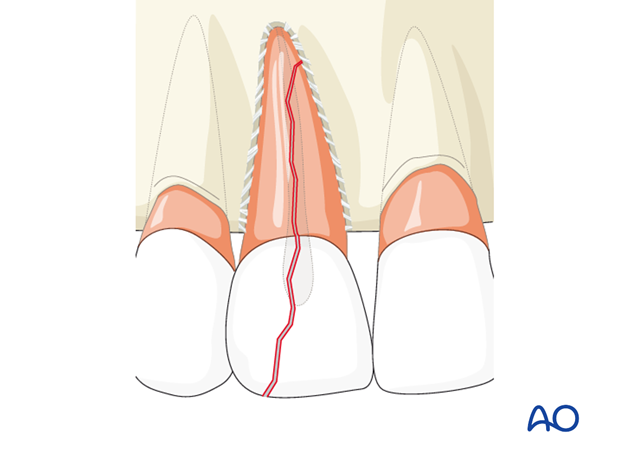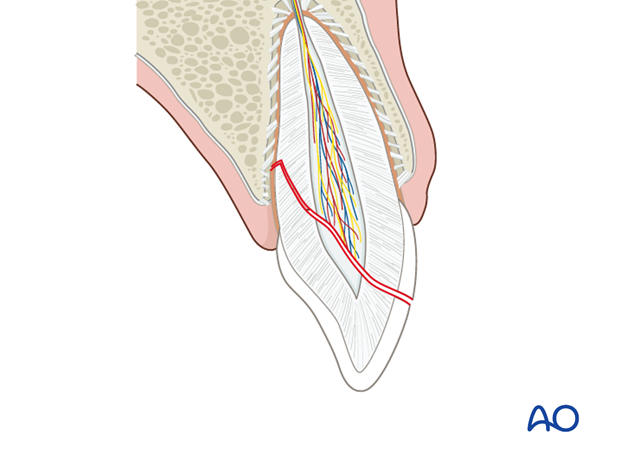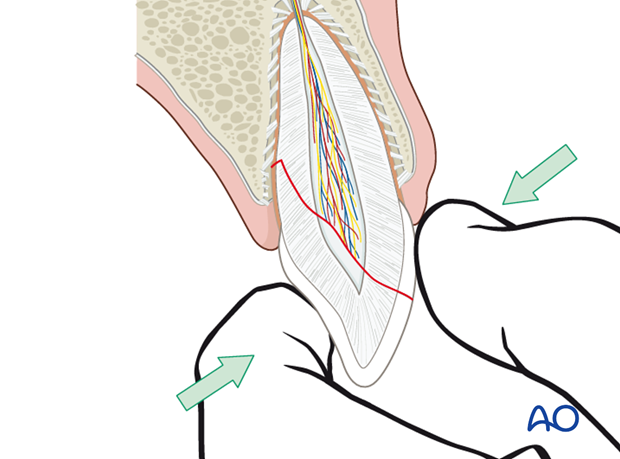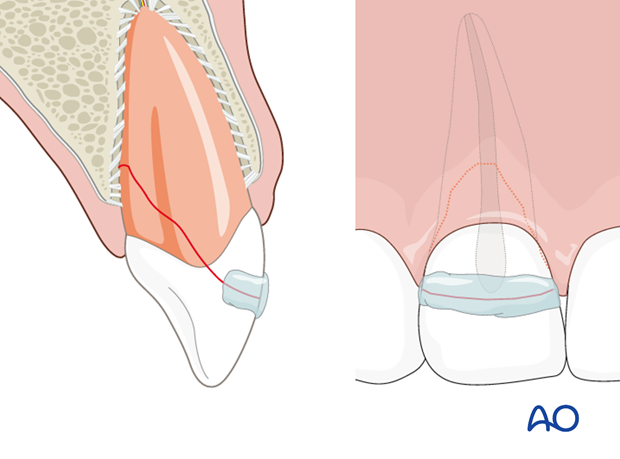Various treatment options
1. Decision/Indication
Depending on the clinical findings, six treatment scenarios may be considered. Most of these may be deferred to later treatment.
- Removal of a superficial coronal crown-root fragment and subsequent restoration of exposed dentin above the gingival level. This is only indicated in fractures without pulpal exposure.
- Removal of the segment of the fractured fragment with subsequent endodontic treatment and restoration with a post-retained crown. This procedure should be preceded by gingivectomy and ostectomy. This treatment option is indicated in crown-root fractures with palatal subgingival extension.
- Removal of the segment of the fractured fragment with subsequent endodontic treatment and orthodontic extrusion of the remaining root with subsequent restoration with a post-retained crown. This treatment option is indicated if the root has sufficient length after extrusion to support a post-retained crown.
- Removal of the segment of the fractured fragment with subsequent endodontic treatment followed by surgical extrusion (intraalveolar transplantation) of the remaining root, with subsequent restoration with a post-retained crown. This treatment option is indicated if the root has sufficient length after extrusion to support a post-retained crown.
- When an implant solution is planned, after removal of the crown the root fragment may be left in situ just below the alveolar crest (coronectomy) in order to avoid alveolar resorption, thus maintaining the volume of the alveolar process for later optimal implant installation.
6. Extraction may be performed with immediate or delayed implant-retained crown restoration or the use of a conventional bridge. Extraction is inevitable in deep crown-root fractures, the extreme being a vertical fracture going towards the apex.
Crown-root fractures with a course as illustrated will inevitably lead to periodontal break down along the entire length of the fracture. For this reason, early diagnosis is essential for the prognosis of later implant restoration.

Timing of treatment
All of the treatment modalities (except extraction) are technique sensitive and do not need to be performed in the acute phase. Instead, the coronal fragment can be temporarily bonded to the cervical portion of the tooth with a composite or resin. This may add to the comfort of the patient until the patient’s final treatment. Prognosis will not be influenced by delay of treatment within a time frame of 1 to 2 weeks.
2. Emergency splinting
Principles
Ideally, and as a temporary measure, immobilization of the coronal fragments prevents pain during occlusion and chewing,

Reduction
Digital pressure on the lingual aspect of the crown reduces the fracture and normalizes occlusion.

Fixation of fragment with splinting
After etching with phosphoric acid the two fragments are splinted together with composite resin. This treatment gives the patient a waiting period with the tooth still in situ for the planning of the definitive treatment.

3. Aftercare following treatment of crown-root fractures
Aftercare includes follow-up of pulpal vitality and restoration of the crown in cases not involving the pulp. Most cases will need endodontic treatment (exceptions are cases of immature root formation where partial pulpectomy is an option).













